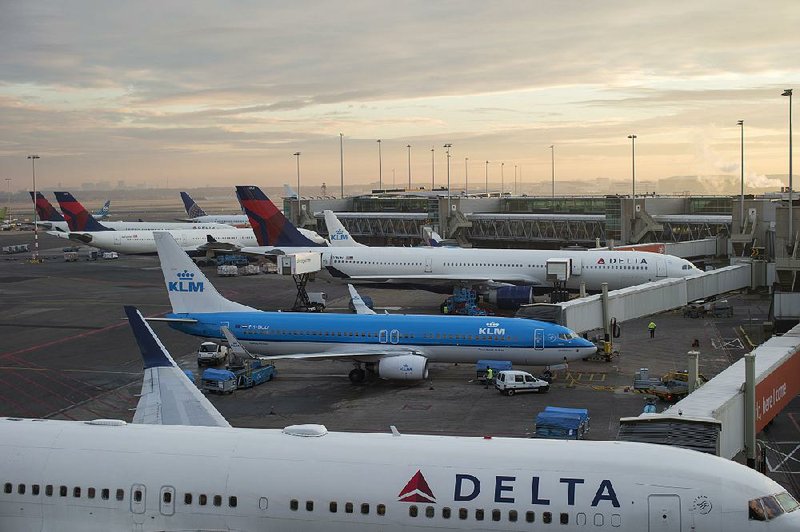MINNEAPOLIS -- Red wine, cannoli and meatballs were abundant and free for passengers waiting to board the inaugural Twin Cities-to-Rome flight last month.
As the plane pushed back from Gate G6, an airport firetruck sprayed it with a water cannon to celebrate the new route.
Fewer than 10 of the approximately 500 daily departures from Minneapolis-St. Paul International go beyond North America, so the new flight was celebrated. For Delta Air Lines, the airport's largest carrier, long-term growth hinges on international expansion. Two-thirds of Delta's revenue is from flights inside the United States.
"Delta needs to expand from a primarily domestic airline to an international airline," said Tim Mapes, the airline's senior vice president of marketing.
Delta's international reach grew substantially in 2008 when it acquired former Northwest Airlines, which had been based in the Minneapolis area and had a strong route system to Asia. Delta, meanwhile, had many flights to Europe and a strong partnership with the Dutch airline KLM.
The company plans to expand its international business chiefly through partnership alliances, joint ventures and code-share agreements with overseas airlines, said Jeff Arinder, Delta's vice president of partner development. It will add overseas flights more gradually. For instance, the new flight from Minneapolis to Rome, along with another between Minneapolis and Reykjavik, Iceland, for now are summer-only routes.
As Delta's partnerships mature, Arinder said, "It will open the possibility for further expansion of Delta service to our partner's international hubs from Minneapolis."
For passengers, one connection into a region can produce dozens of other quick destination options. For instance, the Rome flight offers passengers access not only to Italy but also to dozens of cities across the Middle East and North Africa.
The company's long-term objective, however, is to fly Delta planes to more cities overseas.
"You can't have a big international presence without a big domestic presence, and the international piece makes the domestic piece more profitable," said William Swelbar of Massachusetts Institute of Technology's International Center for Air Transportation. "That ability to get the passenger on Delta and keep it on Delta is vitally important."
While no American carrier derives most of its revenue from international routes, the biggest carriers have been adding international routes routinely -- in part to keep up with competitors that are reaching around the world and increasingly into the U.S.
Before the three largest U.S. airlines went through bankruptcy over the past decade, some derived as much as 80 percent of revenue in the domestic market, Swelbar said. Last year, domestic flights accounted for just 58 percent of revenue at United Airlines, 69 percent at Delta and 70 percent at American Airlines.
Delta's international strategy varies by geography.
The airline has had huge success in Europe through ventures with KLM, Air France, Alitalia of Italy and Richard Branson's airline, Virgin Atlantic, in which it bought a 49 percent stake in 2013. These agreements give Delta avenues to expand its flights at partners' European hubs.
In Asia, Delta's situation is more precarious, with the future of its hub at Tokyo's Narita International Airport in limbo. The hub was a key asset of Northwest's, but the recent expansion of international flights at Tokyo's Haneda Airport, which is closer to the city and more appealing to some passengers, threatens to make the flights at Narita uncompetitive.
Business on 06/17/2016
